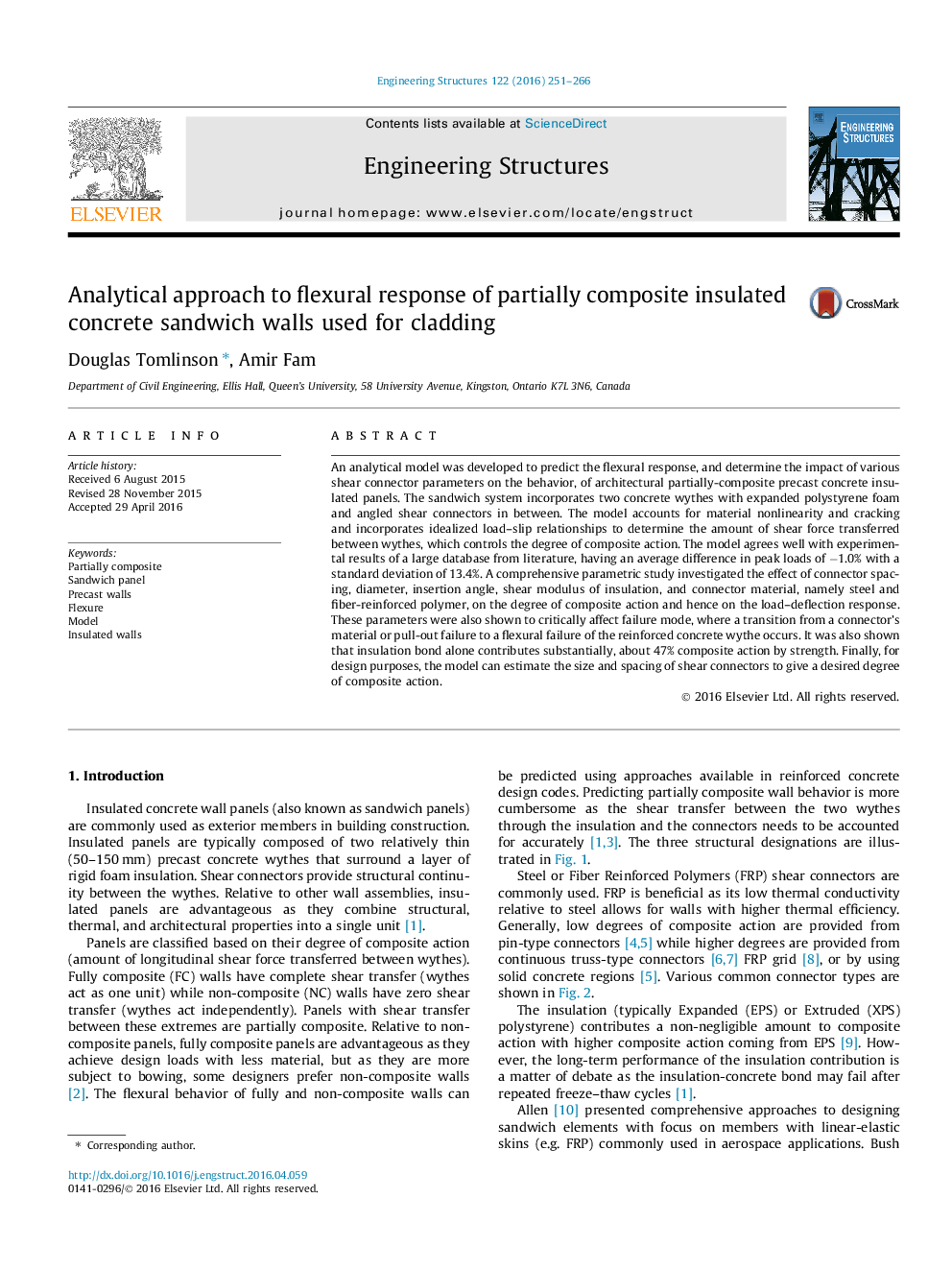| Article ID | Journal | Published Year | Pages | File Type |
|---|---|---|---|---|
| 6739911 | Engineering Structures | 2016 | 16 Pages |
Abstract
An analytical model was developed to predict the flexural response, and determine the impact of various shear connector parameters on the behavior, of architectural partially-composite precast concrete insulated panels. The sandwich system incorporates two concrete wythes with expanded polystyrene foam and angled shear connectors in between. The model accounts for material nonlinearity and cracking and incorporates idealized load-slip relationships to determine the amount of shear force transferred between wythes, which controls the degree of composite action. The model agrees well with experimental results of a large database from literature, having an average difference in peak loads of â1.0% with a standard deviation of 13.4%. A comprehensive parametric study investigated the effect of connector spacing, diameter, insertion angle, shear modulus of insulation, and connector material, namely steel and fiber-reinforced polymer, on the degree of composite action and hence on the load-deflection response. These parameters were also shown to critically affect failure mode, where a transition from a connector's material or pull-out failure to a flexural failure of the reinforced concrete wythe occurs. It was also shown that insulation bond alone contributes substantially, about 47% composite action by strength. Finally, for design purposes, the model can estimate the size and spacing of shear connectors to give a desired degree of composite action.
Keywords
Related Topics
Physical Sciences and Engineering
Earth and Planetary Sciences
Geotechnical Engineering and Engineering Geology
Authors
Douglas Tomlinson, Amir Fam,
